Wildflower families: Rosaceae, the Rose family
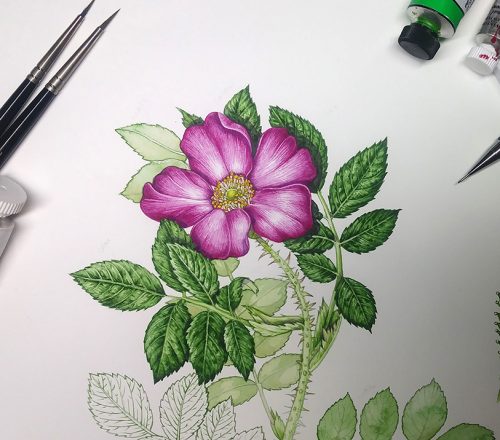
Wildflower families: Rosaceae, the Rose family is the latest blog in a series on common wildflower families, thanks to my online Field Studies Council course. Learning about the botany of a plant and its family, and similarities within a family, is very useful when it comes to being a botanical illustrator.
This series talks about some common wildflower families. For basic terminology, look at my the basics of botany blog, and another on different fruit types. For more on scientific names, how they work, and why they matter, look at What’s in a name 1 and part 2. Take a look at the other families I’ve looked at so far, the Ranunulaceae (Buttercups), Caryophyllaceae (Campions), and Brassicaceae (Cabbages) I hope to add more families over the coming months.
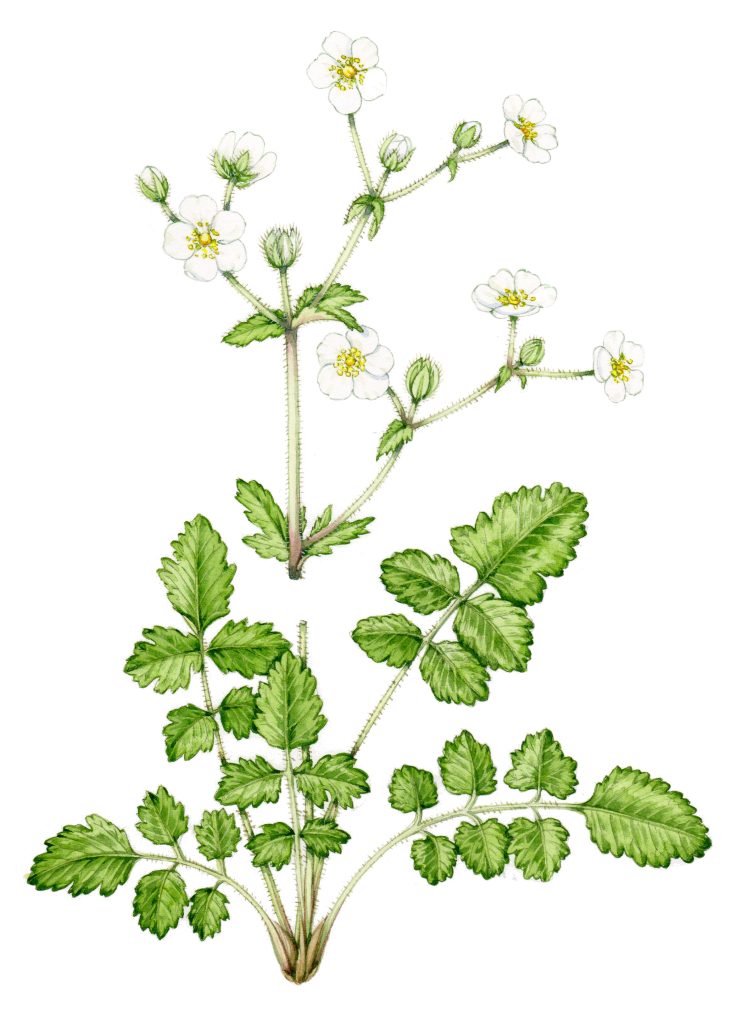
Rock cinquefoil Potentilla rupestris
I know a little about wildflowers, but I am an amateur, and not a trained botanist. So although I’ll try and get stuff right, if you see a mistake, please let me know.
Wildflower families: Rosaceae
The Rose family has 107 genera and over 3100 species globally. Flowers have five or ten petals, and often have an epicalyx (see below). Leaves have stipules, and tend to be alternate. There’s a vast array of fruits in this family, from plums and apples to strawberries, Mountain avens with its dry achenes in one head, to Lady’s mantle with a lone seed in a receptacle. As well as Roses, other Rosaceae garden flowers include Cotoneasters, Pyrocanthus, and Geums. Our most common fruit crops are Rosaceae, and lots of highly varied wild flowers are in this family, including Cinquefoil, Meadowsweet, and Agrimony.

Entire leaved Cotoneaster Cotoneaster integrifolius and other Cotoneaster species
(For more on telling Cotoneaster species apart, not a fun occupation, please check out my blog).
Rosaceae overview
Plants in this family have alternate leaves with stipules at their base. A stipule is like a tiny leaf that grows in pairs at the base of a leaf stalk, next to the stem. Flowers have five or ten petals, lots of stamens, and can be solitary or in racemes. The name Rosaceae comes from the Latin for rose, Rosa. There’s a suggestion that the name is far more ancient than that, possibly dated back to ancient Persia where ornamental roses were first grown.
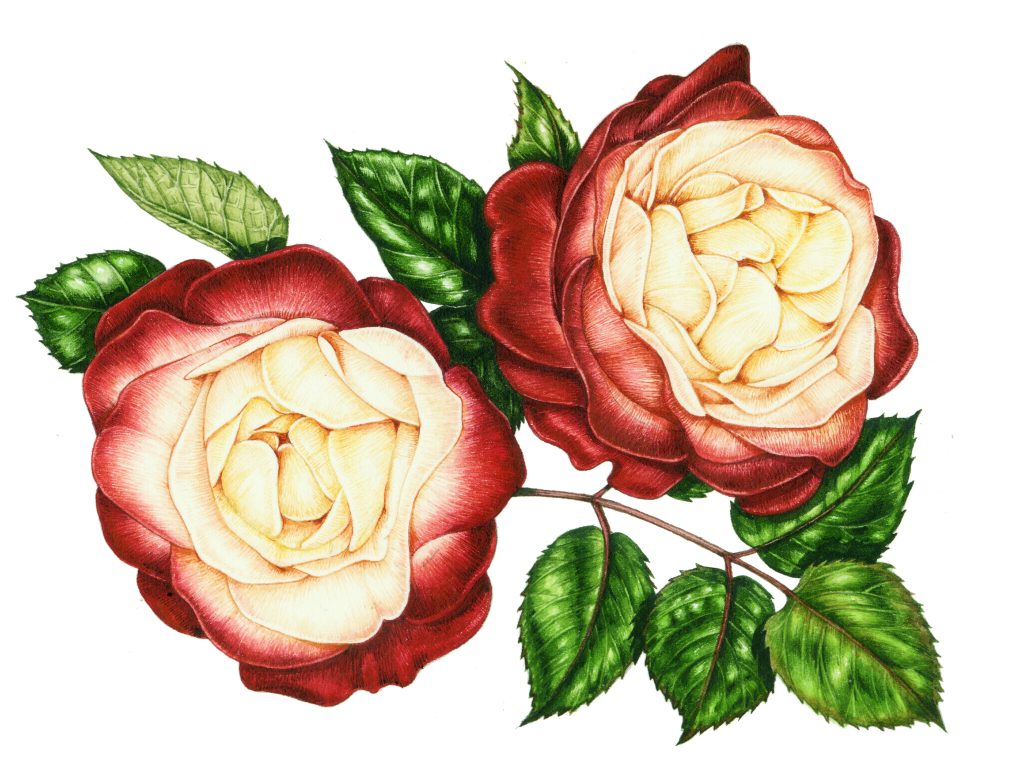
Copyright Jersey Post: Roses Nostalgia Rosa Nostalgia
Some members of this family reproduce asexually, without seeds. Strawberries do this with runners, while Raspberries, Blackberries, and some roses put up suckers at some distance from the parent plant.
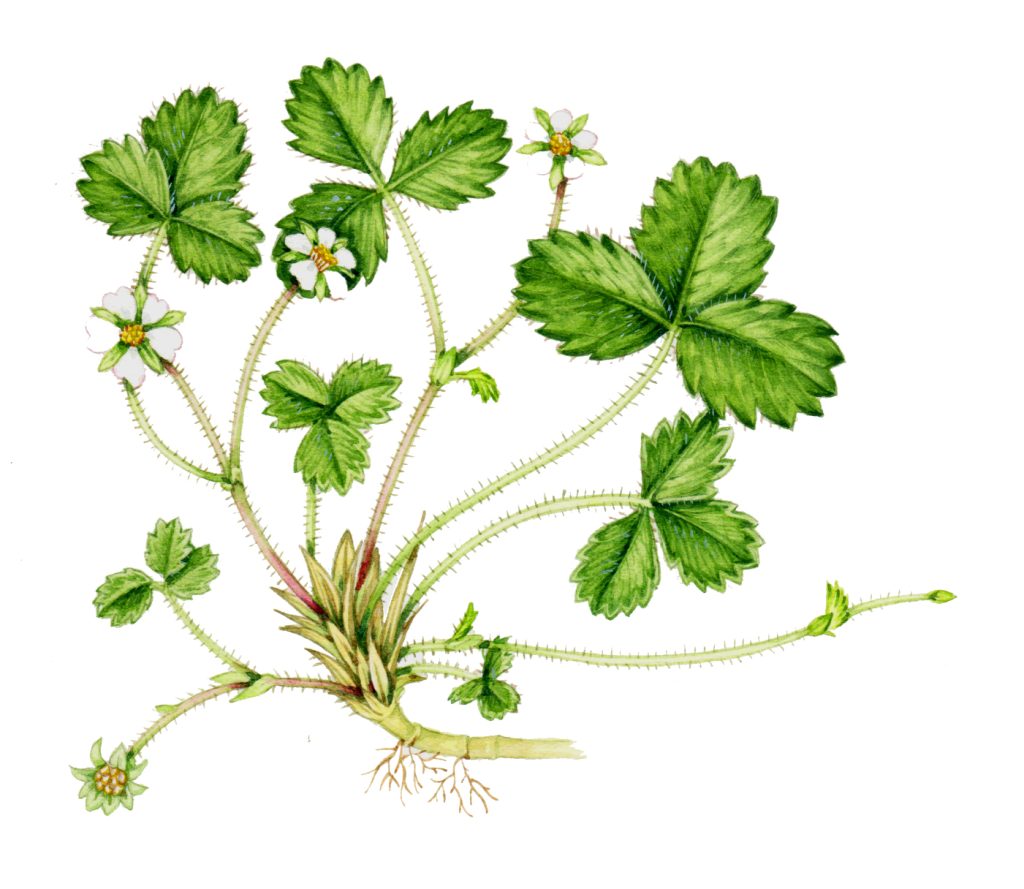
Barren strawberry Potentilla sterilis showing a runner
Rosaceae Leaves
Rosaceae leaves are often lobed, with toothed or deeply notched margins. (For more on leaf margins, look at my blog). Some may be very deeply lobed, like Tormentil.
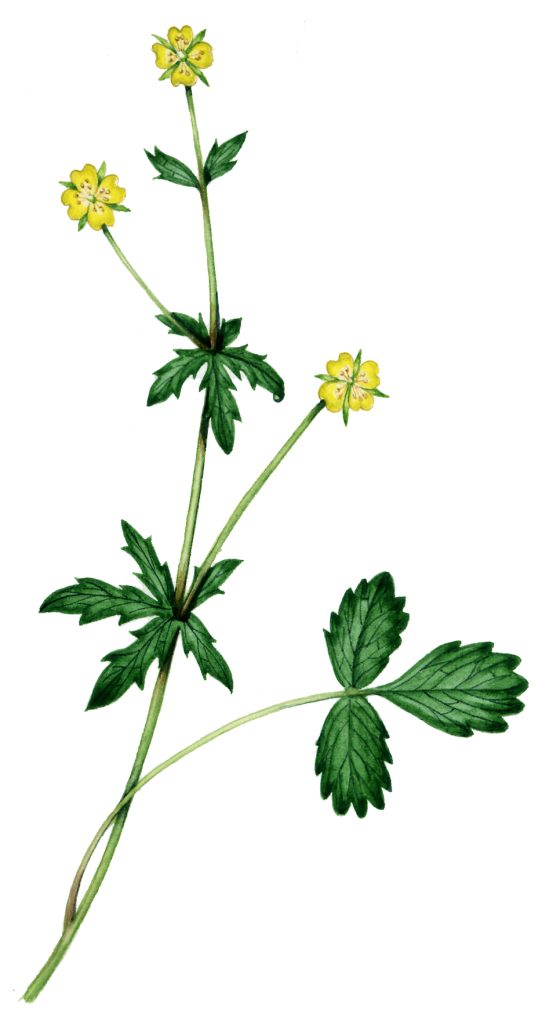
Tormentil Potentilla erecta
Some Rosaceae have compound leaves made of an array of smaller leaflets rather than simple ones (For more on simple versus compound leaves check out my blog). You can tell if a Rosaceae leaf is compound or simple by looking for a stipule. You’ll only stipules at the base of a leaf, so if you look at a Rosaceae “leaf” and see no stipules, it could well be a leaflet. Examine a rose leaf (compound, of many leaflets) or a Blackberry (likewise) and use the stipule position to decide where the stalk of the entire leaf (not that of a leaflet) attaches to the plant. The shape of leaves, if not the size, is pretty consistent across the whole plant.
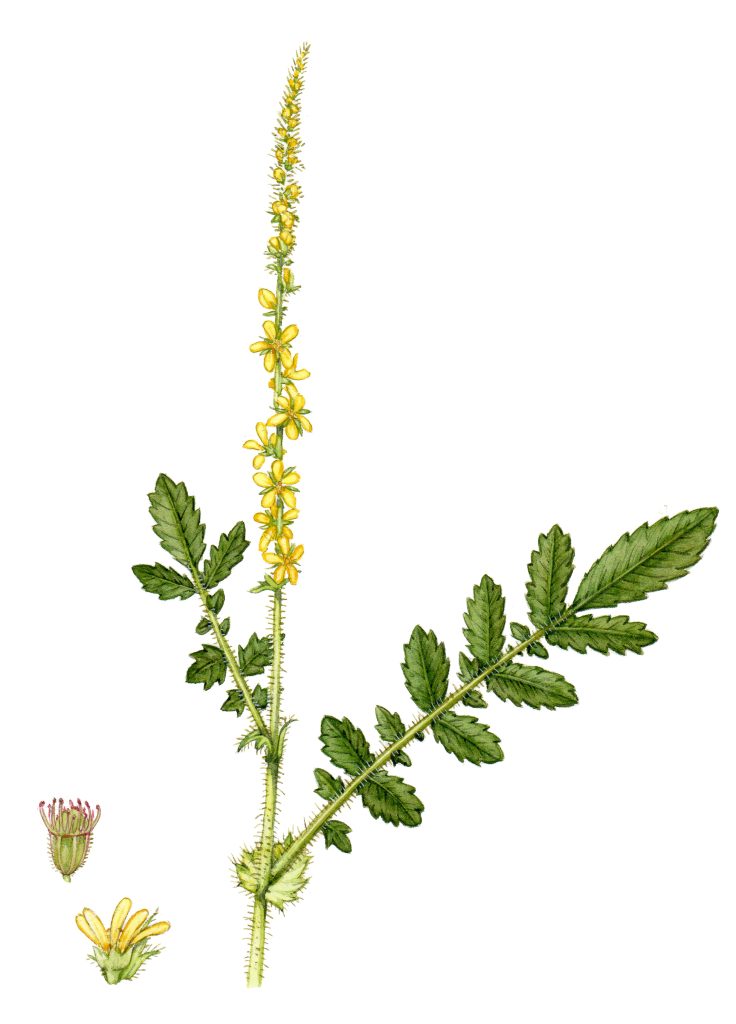
Agrimony Agrimonia eupatoria clearly showing basal stipules
Stipules can be tiny to really large, smooth to toothed. Often the stipules can prove confusing as they resemble part of the main leaf.
Rosaceae Flowers
Rosaceae flowers are regular, with radial symmetry. They have five petals, which tend to overlap, and five to ten sepals which also overlap but mostly do not fuse.
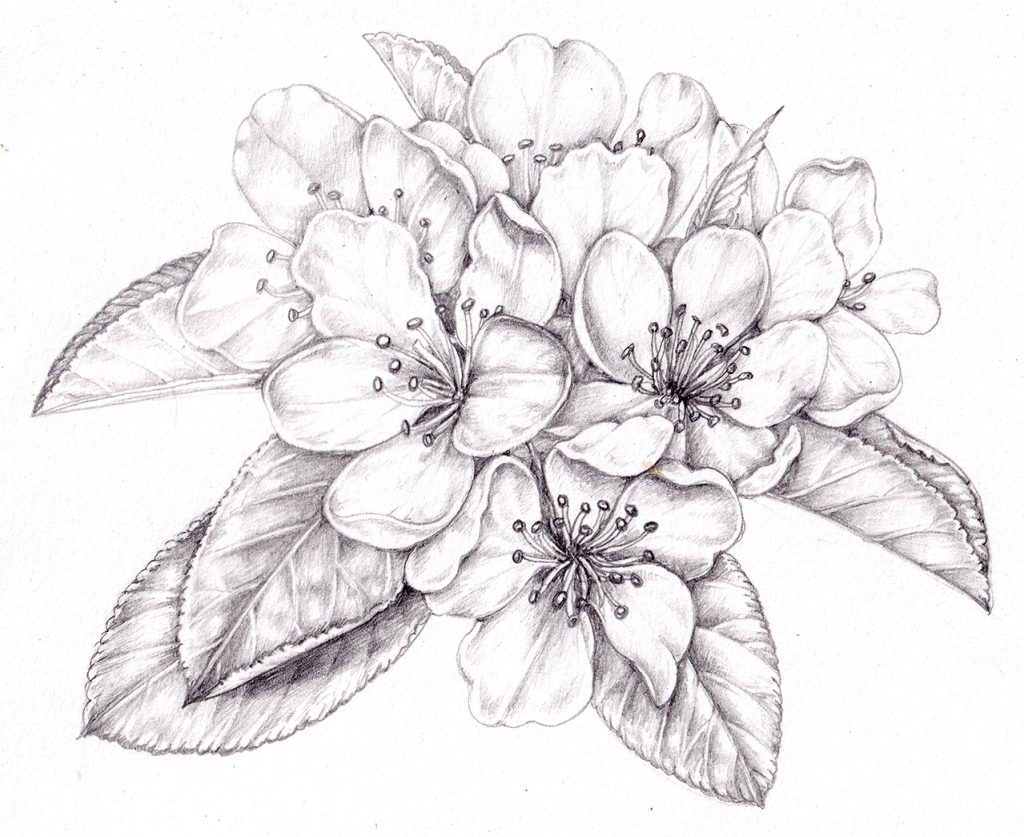
Blossom of Pear Pyrus communis
Some Rosaceae have an epicalyx, a whorl of bracts just below the calyx. You can see this in the Cinquefoils and the Strawberry. If you look closely at the green “top” of a strawberry, you can see the sepals, the epicalyx in a circle below them, and you may also see some residual stamens, clinging to the inner edges of the calyx array. There’s a good blog on this, by The botanist in the kitchen.
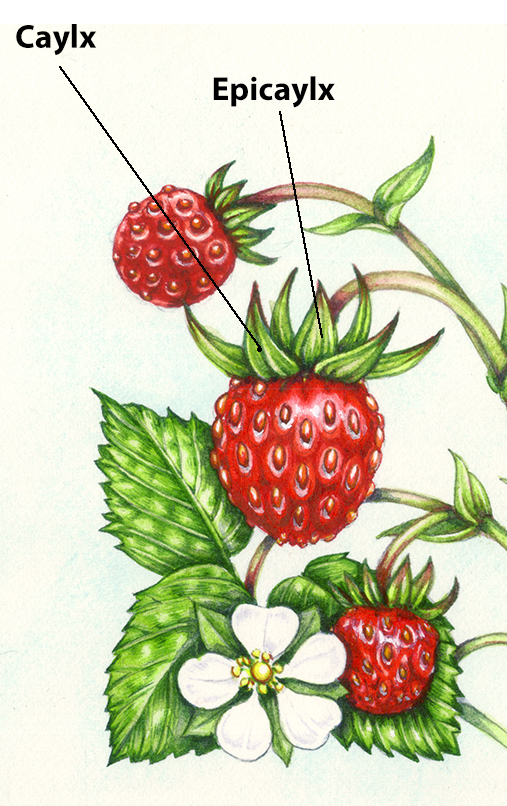
Wild strawberry Fragaria vesca showing calyx and epicaylx
Flowers grow in compound clusters at the ends of the stem, known as cymes or racemes. However, they can also be solitary.
They are bisexual with lots of stamens surrounding one or many free carpels. The stamens, should you care to examine them, grow in whorls of 5 or more, but this can be really hard to see. They bend inwards towards the flower.
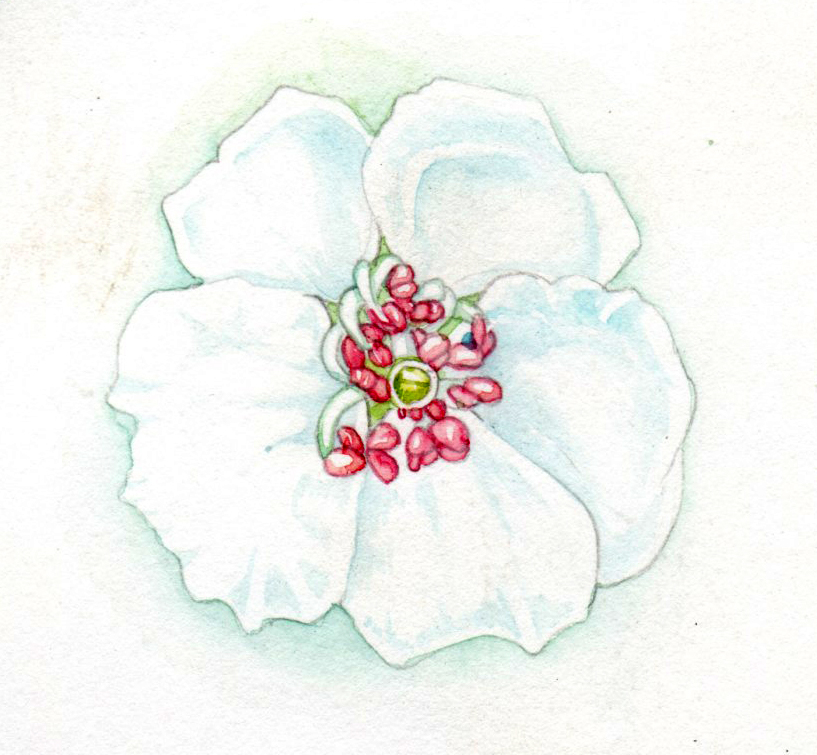
Individual Hawthorn blossom Craetegus monogyna showing incurved stamens
Carpels (the female reproductive organ of a flower, consisting of a style, an ovary, and a stigma) tend to be superior, growing above the flowering structure. In some species, they are Perigynous, meaning the flowering parts grow around the edge of the receptacle where the pistil (the tube down to the seed, through which pollen has to travel to fertilize the ovule and form a seed) is housed. Cherries and roses are perigynous. For more on ovary positions look at my blog on the ovary.
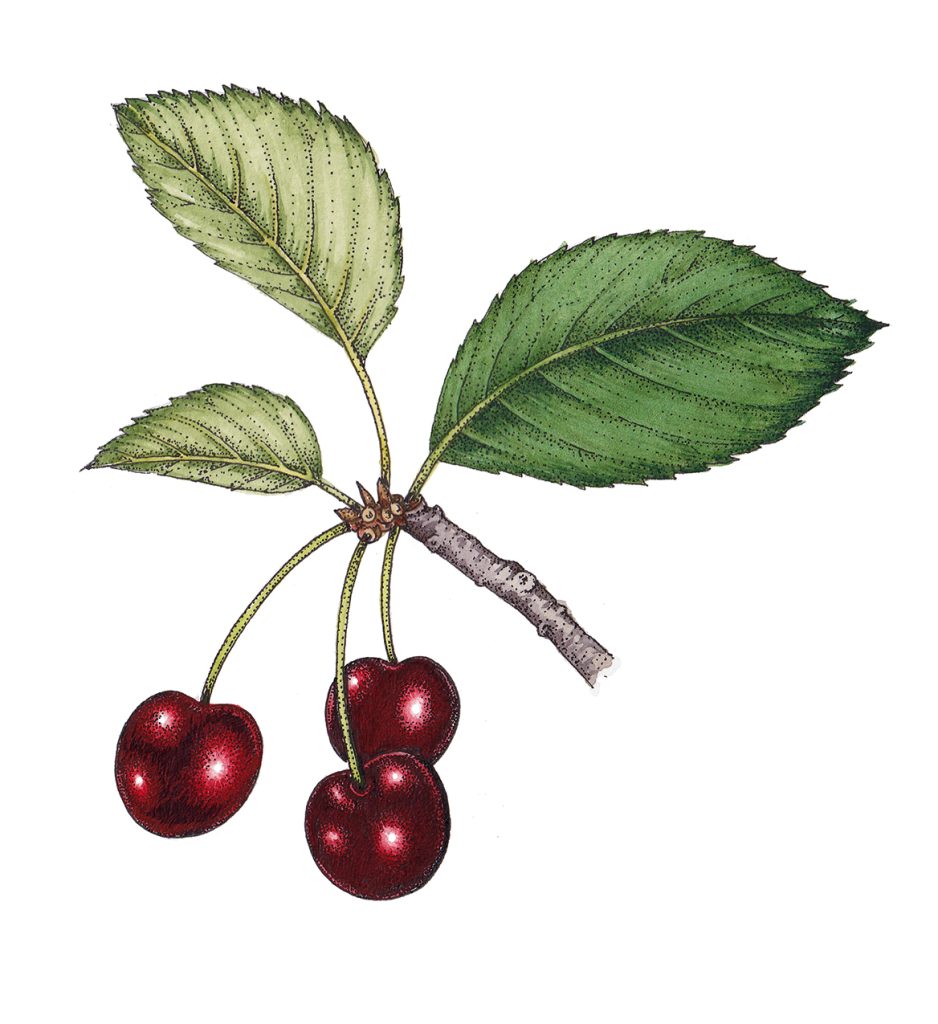
Cherry Prunus avium
Rosaceae Fruit: Aggregates, Drupes and Achenes
There is an extraordinary amount of variety in the fruits of the Rosaceae, and I’ve ended up putting my research here into a separate blog which I’ll publish in a week or two. Below is a summary.
Rosacea produce one to two seeded fruit, but that’s where the similarities end.
Consider the variation. Like the Ranunculaceae, some species have assemblies of achenes. Some achenes have spikes to help dispersal, such as the Geum and Avens species. Or have achenes twisted together so they look like a “mister whippy” ice-cream, a beautiful effect shown by Measdowsweet.
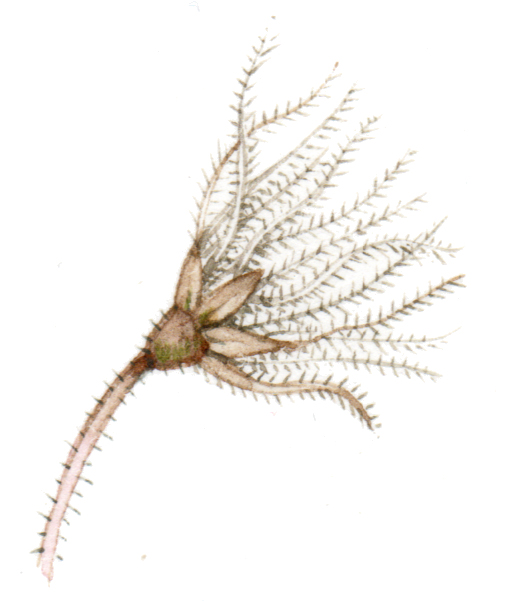
Assembled carpels of the Mountain avens Dryas octopetala
Some familiar soft fruit, like the blackberry and raspberry, are made of lots of individual fruits. Each a little “blob” is called a drupelet, and contains one or two seeds. These are known as aggregate fruit. From the position of the calyx, you can tell these have developed from superior ovaries.
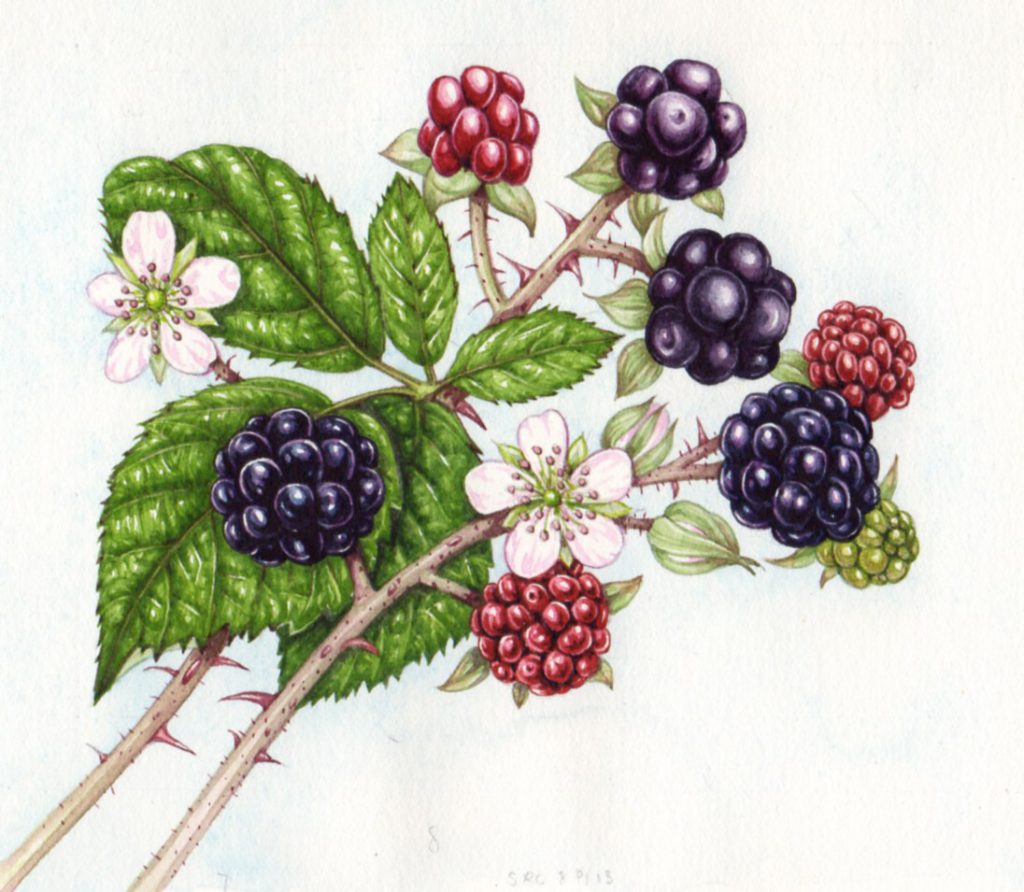
Copyright Jersey post 2017 Blackberry Rubus fruticosa
Drupes are formed when ovary tissue swells to become fleshy, enclosed in a thin skin. At the centre of this you have a hard stone, a woody coat for the seed within. Peaches, plums, cherries and apricots are drupes.
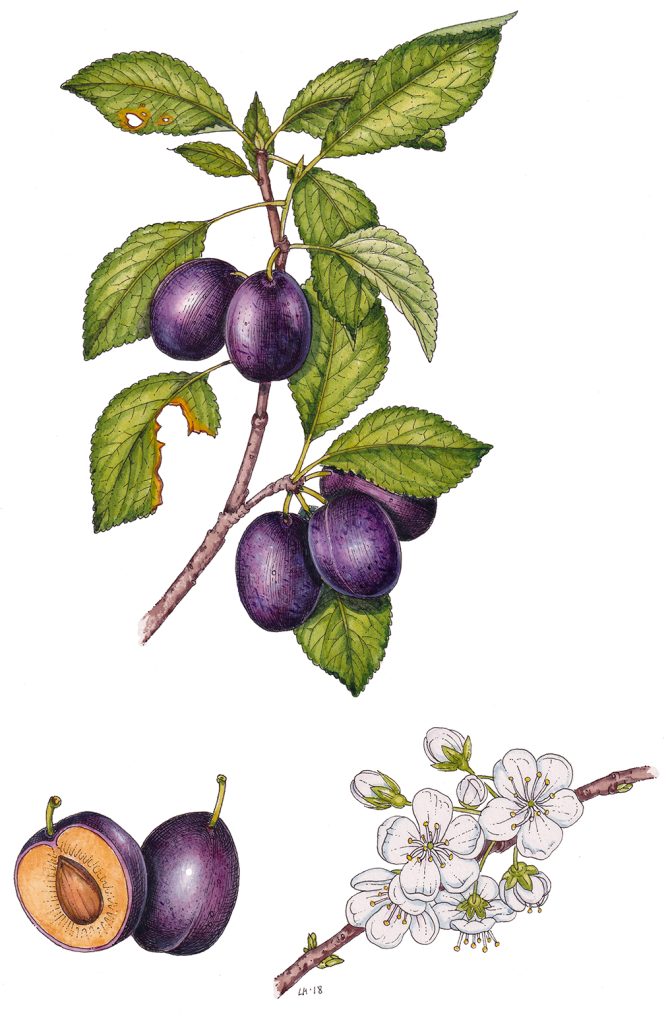
Plum Prunus prunus
Apples and pears are pomes. A pome is formed from the receptacle, the area below the flowering structure. This swells and within it you find the apple core with five to ten pips.
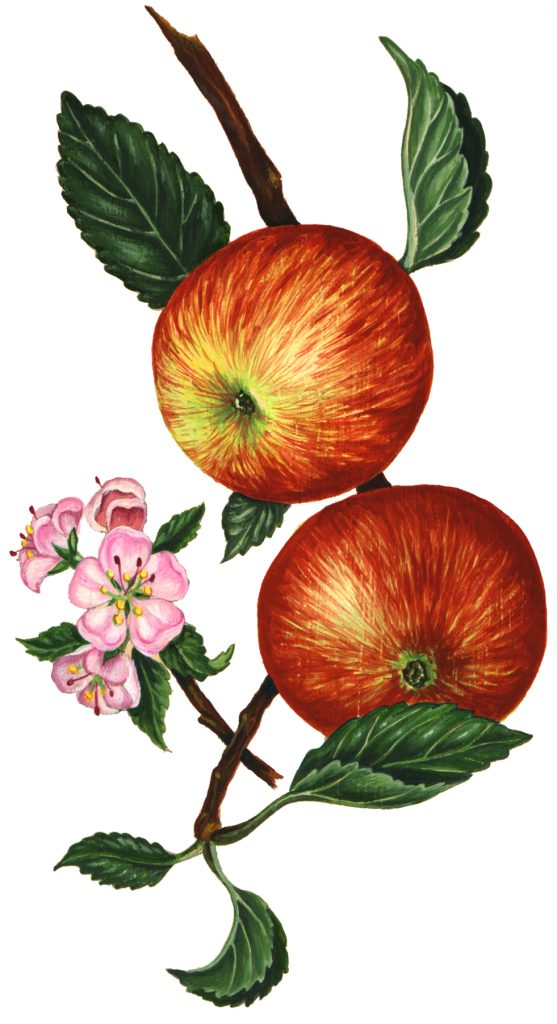
Somerset redstreak apple Malus domestica
Strawberries attach their fruit to the outside of a swollen receptacle. The fleshy red bit isn’t a fruit at all. The fruit is each of the tiny yellow seeds embedded in the red flesh.
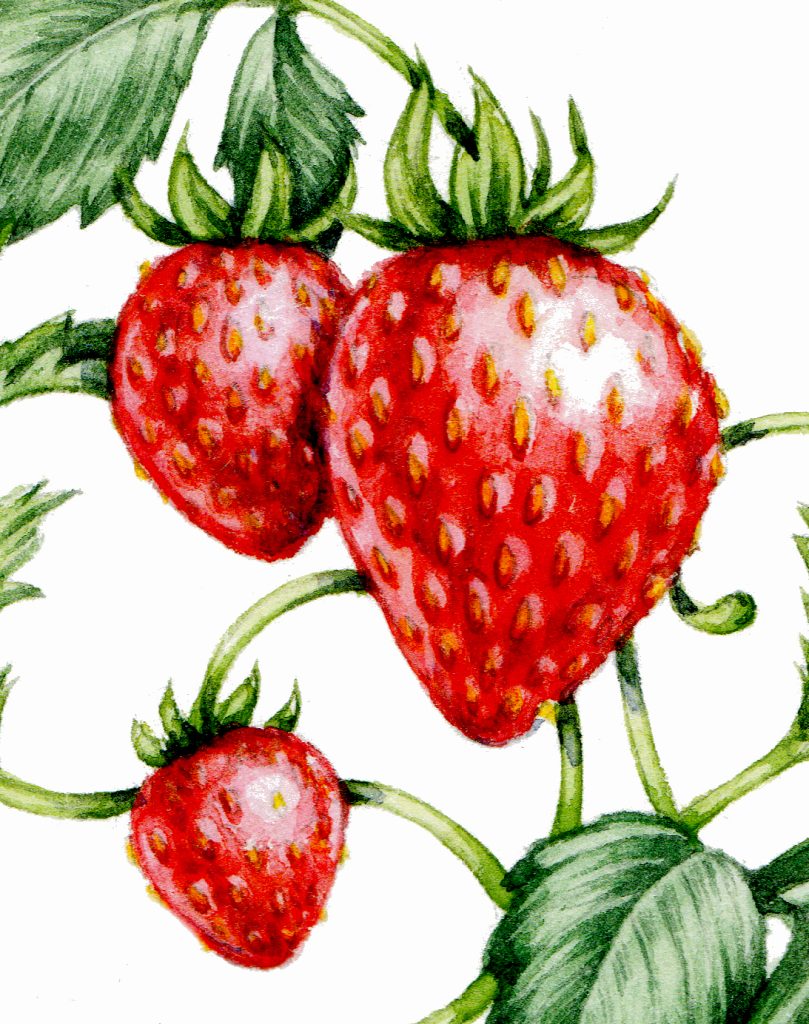
Strawberries Fragaria × ananassa
Rosaceae: Other species
As well as the fruit discussed, Rosaceae contains the Lady’s mantle, Silverweed, Cinquefoil, Piri-piri bur, Rowan, Sorbus species, Cotoneasters, and (of course) roses.
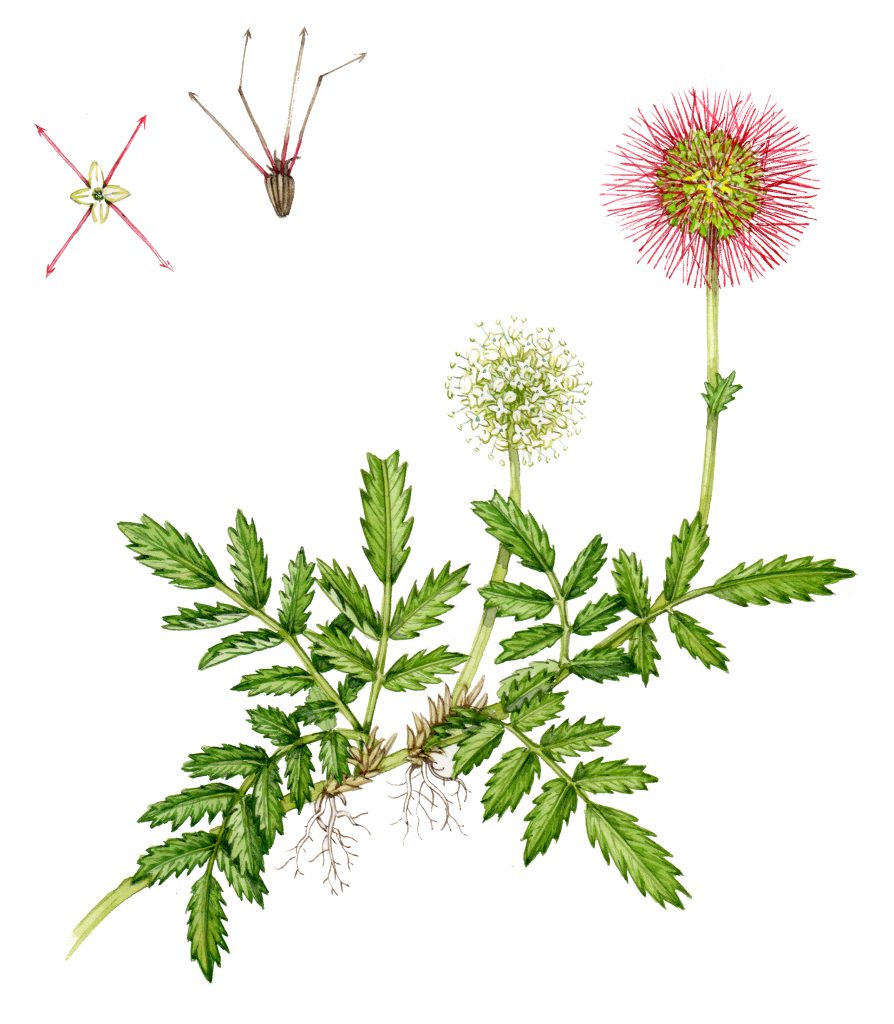
Piri Piri bur Acaena novae-zelandiae
Conclusion
I hope this blog on the Rosaceae wildflower family was of some interest. What a varied family! I hope to do more of these blogs over the coming weeks and months. References include my FSC botany course, the Common Families of Flowering Plants by Michael Hickey & Clive King, and information from Naturespot.
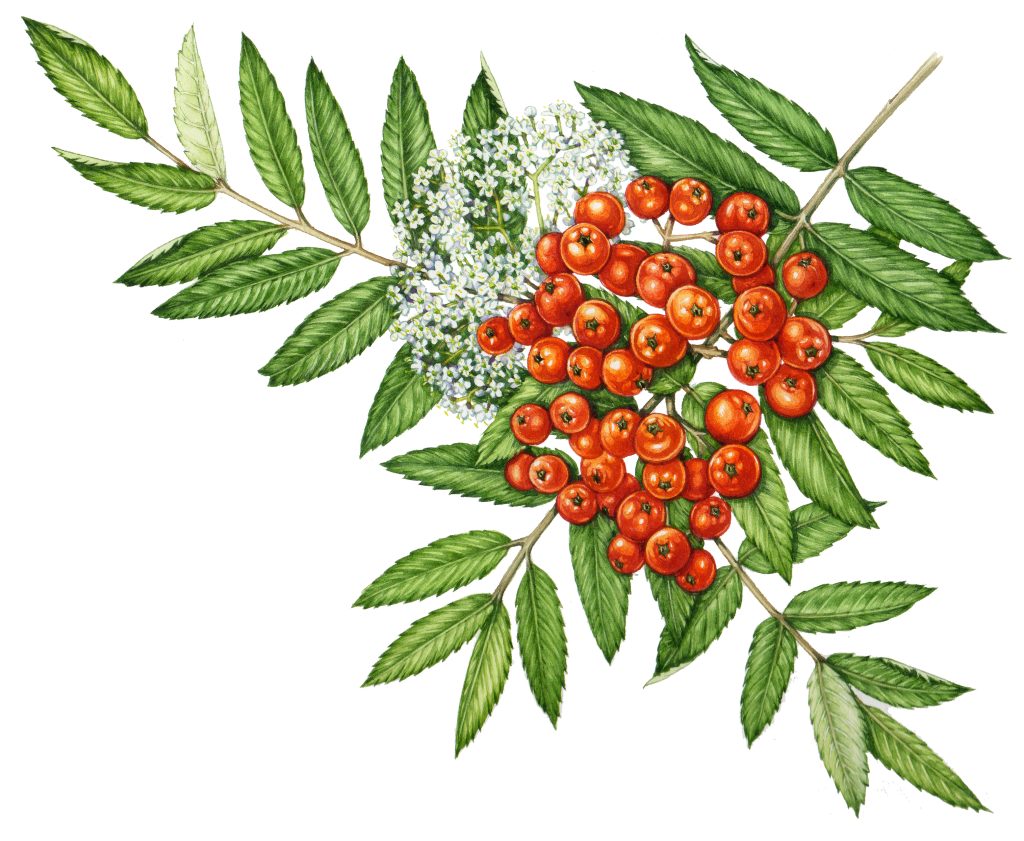
Rowan Sorbus aucuparia sprig with berries and blossom

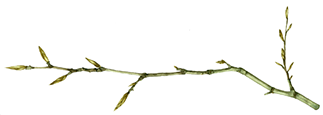
Amazing conternt with great fn